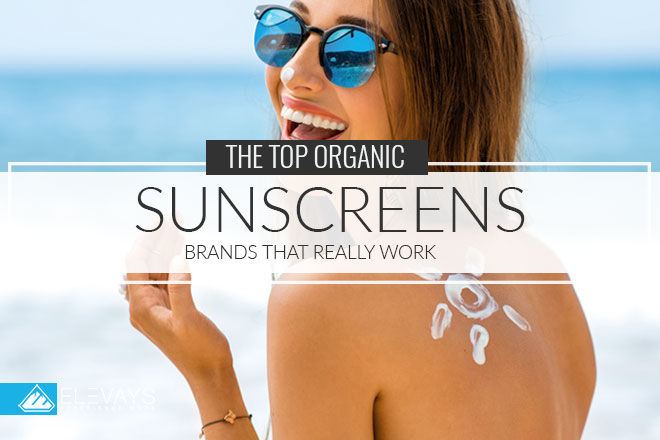What’s in your pool bag? Sunscreen is the first item we remember to pack when going outside during the summer- and especially with kids. It has been a staple in a good parent’s beach bag until recent controversial evidence of harmful commercial ingredients.
Before I go into the dangerous ingredients let me start by saying that sunscreen is SO important- but ONLY if it’s the good stuff. Overexposure to UVA rays can not only damage your skin and cause aging but can also increase your risk of squamous cell carcinoma, basal cell carcinoma, and melanoma.
While sunscreen is extremely important, it’s not the only step you can take to prevent sun damage. Did you know that eating certain color foods before a day in the sun can help prevent UV light damage, wrinkles, hyperpigmentation and oxidative stress that causes aging?
TRUTH BOMB:
You’re
Already killing it!
If You Were More Consistent With Your Wellness Routine, You’d Be Unstoppable.
Phytonutrients lycopene and ellagic acid found in red plants help protect your skin from sun damage. A study found that women who ate a tablespoon of tomato paste every day for 12 weeks before being exposed to UV light had lower levels of sun damage than those who didn’t consume tomato paste. Good snack ideas before sun exposure include raspberry or strawberry smoothies, watermelon juice and a refreshing tomato salad. For more info, check out our article on how eating a specific color will allow for optimal physical and emotional health!
Now back to sunscreen! In addition to red foods, natural and organic sunscreen is key to combating painful and dangerous sunburns, wrinkling, age spots, and cancer. No matter what season- you should be applying natural sunscreen to your face daily (hint: make this foolproof and choose a daily moisturizer that’s already loaded with SPF. In this article, we’re going to discuss the dangerous ingredients found in conventional sunscreens and then I’m going to give you a list of the best chemical free sunscreens that will protect you and your family.
Does Your Sunscreen Even Work?
The Environmental Working Group reported in 2018 that 67% of sunscreens contain harmful ingredients and did not provide adequate sun protection. Not only that, but according to Sonya Lunder lead scientist with the sunscreen guide noted that half of the sunscreens shelved in the U.S. would be denied for market sale in Europe due to their harmful chemicals and insufficient protection. In fact, U.S. sunscreens allow 3x more damaging UVA rays to pass through the skin than E.U. sunscreens.
Chemicals in Conventional Sunscreens
Maybe you’ve ditched sulfates and switched shampoos. How is it that a product specifically designed to “protect” us contains a ton of the same ingredients in self-care products deemed harmful?
For most of us, the fact that sunscreen could actually be hurting us instead of helping us didn’t even cross our mind until recently. Number 1, we shouldn’t rely on sunscreen alone to protect from damaging light rays.Number 2, because the FDA does not require safety tests on cosmetics- we must do the research and protect ourselves. I’m really glad you’re here.
So we ditched the conventional shampoo, which is good but think about this: we apply a thick layer of sunscreen multiple times a day. That means that dangerous chemicals are penetrating our skin and blood at a higher rate. Here are the common ingredients found in conventional sunscreen that we must steer clear from.
Oxybenzone
Hawaii has recently banned the use of Oxybenzone in sunscreen because of its ability to bleach and kill coral reefs. Let that sink in. If Oxybenzone can bleach and destroy coral reefs- what does it do to our bodies?
Well, for starters Oxybenzone easily penetrates the skin and gets into the bloodstream. It is also a known endocrine disruptor, meaning that it mimics estrogen and throws our hormones out of balance. Since it acts like estrogen in the body it has also been linked to abnormal sperm function in animal studies. Studies also show that adolescent boys have lower total testosterone levels with high oxybenzone levels.
Ozybenzone has also been linked to endometriosis in women and lower birth weights in newborn girls! Short term effects? Oxybenzone is a skin allergen and irritant for a huge percentage of people- think itchy eczema.
If we want to protect ourselves and our environment we need to ditch sunscreens containing Oxybenzone and reach for organic sunscreens.
Vitamin A Ingredients
Retinyl palmitate is a form of vitamin a that is widely used in U.S. sunscreens. In 2010, the Environmental Working Group found that approximately 40% of sunscreens in the U.S. contained vitamin A ingredients. You may be familiar with the strong suggestion to avoid using moisturizers and care products that contain vitamin A before sun exposure? Well, there are a lot of reasons behind that far more than the simple fact that it increases your risk for sunburn and skin damage.
Another reason being that retinyl palmitate may lead to skin tumors. According to government animal study data, vitamin A ingredients react with UV rays and increase skin tumor risk.
Other vitamin A ingredients to avoid in sunscreen: retinol, retinyl acetate, retinyl linoleate. These skin cancer promoting ingredients need to be swapped with organic sunscreen ingredients. Keep reading to discover more.
Methylisothiazolinone
Fun fact: methylisothiazolinone was named 2013 Allergen of the Year by the American Contact Dermatitis Society. This is not a joke. This inactive ingredient of concern is a preservative found in over 44 sunscreens on the U.S. market.
Sunscreen Lotions vs. Sunscreen Sprays
Sprays are convenient, I won’t lie, when sprays were in their prime, I was excited about it. But sunscreen sprays don’t allow for a thick enough layer for adequate protection. In addition, the chemicals found in sunscreens are more easily inhaled into the lungs and cause a whole host of health problems.
Chemical-based sunscreens vs. Mineral-based Sunscreen
Move away from chemical-based sunscreens and towards mineral-based organic protectors consisting of zinc oxide and titanium dioxide. The best natural sunscreen will be mineral-based because it works to reflect UV-light rather than a chemical-based sunscreen that requires absorption. The last thing we want is to absorb the chemicals in conventional sunscreen. Petrochemicals and mineral oil, silicones, synthetic fragrances, and parabens are some of the other troublesome ingredients hiding in your sunscreen.
To avoid dangerous side effects, purchase only organic sunscreen that is mineral-based and has ingredients like zinc oxide and titanium dioxide for natural sun protection.
What To Do Before Applying Sunscreen
Natural sunlight helps our bodies manufacture vitamin D. Without vitamin D, we increase our risk for depression, arthritis, cancer, and other diseases. We don’t want too much sunlight though! Because there is no perfect sunscreen (there are organic sunscreens I will name that are better) it’s important to form other healthy habits to protect you and your family.
Try opting for sun-protective hats and sunglasses in addition to an umbrella when you’re out during peak sunlight. Check the UV index on the weather app to see when the sun is the strongest.
The Worst Sunscreens on the Market
It always blows my mind when I see products that use phrases like “dermatologist recommended” and then learn that they are overflowing with some of the worst ingredients for you skin. If you’re not already sitting, take a seat and breathe. After this, we’re going to learn the best organic sunscreen for babies, children, and adults.
According to the Environmental Working Group, these sunscreens rank a 7-10 on the safety concern scale. Note this list is not complete *
- Banana Boat Kids Sunscreen Lotion SPF 100
- Banana Boat Kids Continuous Spray Sunscreen SPF 100
- Coppertone Kids Sunscreen Continuous Spray, SPF 50 & SPF 70
- Coppertone Water Babies Foaming Lotion Sunscreen SPF 70 & Babies Sunscreen Stick SPF 55
- CVS Health Kids Clear Sunscreen Spray, SPF 50 & SPF 70
- CVS Health Sun Lotion SPF 60
- Neutrogena Sensitive Skin Sunscreen SPF 60+
- Neutrogena Pure & Free Baby Sunscreen SPF 60+
- Neutrogena Wet Skin Kids Stick Sunscreen SPF 7+ & Spray Sunscreen SPF 70+
- Neutrogena Ultra Sheer Dry Touch Sunscreen & Ultra Sheer Sunscreen Spray SPF 30,70,85,100
- Panama Jack Sport Sunscreen Lotion SPF 85
The Best Natural Sunscreen
The sunscreens I am listing below are the best chemical free sunscreens. Take conscious steps towards a non-toxic life by protecting your family with these brands. These sunscreens have received the “best” ratings from the Environmental Working Group’s sunscreen guide and can be found in most retailers.
- Aveeno Baby Continuous Protection Sensitive Skin Lotion Sunscreen – this is a good organic sunscreen for babies (and for adults) SPF 50
- CeraVe Baby Sunscreen Lotion
- Goddess Garden Organics Facial natural Sunscreen Lotion- this is one of the best non-toxic light sunscreens on the market SPF 30
- Blue Lizard Australian Sunscreen, baby- another organic sunscreen for babies- and people of all ages with an SPF 30+
- Bare republic Clearscreen Sunscreen Gel, Sport SPF 30
My Favorite Natural and Organic Sunscreens
Erbaviva- Organic Sunscreen SPF 30
This organic sunscreen for face and body is formulated with 20% zinc oxide. It rubs on light and fairly easy with a creamy texture. For up to 80 minutes you can enjoy this water-resistant sunscreen. I love this because it contains organic skin-loving ingredients like aloe, chamomile, sunflower oil, olive oil, jojoba oil, and lavender oil.
Beauty By Earth- Mineral Body organic Sunscreen SPF 25
With 14% non-nano zinc oxide this is a thick sunscreen that is not very easy to rub in. But if we’re being honest- it’s the real deal. Once completely absorbed, you’ll experience insane protection without the grease. Don’t think that it will clog your pores because of its thickness though, this formula is non-comedogenic, non-irritating, and hypoallergenic.
Badger- Unscented Organic Sunscreen SPF 30
Badger is made with all organic sunscreen ingredients with 18.75% non-nano zinc oxide. Because it is free from essential oils and scented extracts, this organic sunscreen is ideal for sensitive skin types. While this sunscreen is thick it rubs in easily.
All Good- Organic Sunscreen for Kids SPF 30
Designed to protect and repair damaged skin, this is one of the best chemical free sunscreens for kids. With 12% non-nano zinc oxide and soothing ingredients like green tea, safflower oil and chamomile- you’ll get a great product for an affordable price.
Raw Elements- Tinted Certified Natural Sunscreen SPF 30
This natural sunscreen is made with organic sunscreen ingredients like green tea, coffee bean, hemp seed oil, sunflower oil, and black tea. Packed with 23% non-nano zinc oxide, you are protected! Not only that, but it’s tinted! So if you want a little color before hitting the sand, try this organic sunscreen.





READ the Latest
Longevity
Health Habits
Health Habits
Longevity